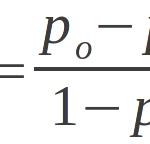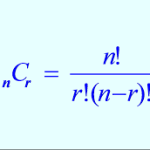Analysis of Variance also termed as ANOVA. It is procedure followed by statisticans to check the potential difference between scale-level dependent variable by a nominal-level variable having two or more categories. It was developed by Ronald Fisher in 1918 and it extends t-test and z-test which compares only nominal level variable to have just two categories.
Types of ANOVA
ANOVAs are majorly of three types:
· One-way ANOVA – One-way ANOVA have only one independent variable and refers to numbers in this variable. For example, to assess differences in IQ by country, you can have 1, 2, and more countries data to compare.
· Two-way ANOVA – Two way ANOVA uses two independent variables. For example, to access differences in IQ by country (variable 1) and gender(variable 2). Here you can examine the interaction between two independent variables. Such Interactions may indicate that differences in IQ is not uniform across a independent variable. For examples females may have higher IQ score over males and have very high score over males in Europe than in America.
Two-way ANOVAs are also termed as factorial ANOVA and can be balanced as well as unbalanced. Balanced refers to having same number of participants in each group where as unbalanced refers to having different number of participants in each group. Following special kind of ANOVAs can be used to handle unbalanced groups.
o Hierarchical approach(Type 1) -If data was not intentionaly unbalanced and has some type of hierarchy between the factors.
o Classical experimental approach(Type 2) – If data was not intentionaly unbalanced and has no hierarchy between the factors.
o Full Regression approach(Type 3) – If data was intentionaly unbalanced because of population.
· N-way or Multivariate ANOVA – N-way ANOVA have multiple independent variables. For example, to assess differences in IQ by country, gender, age etc. simultaneously, N-way ANOVA is to be deployed.
ANOVA Test Procedure
Following are the general steps to carry out ANOVA.
· Setup null and alternative hypothesis where null hypothesis states that there is no significant difference among the groups. And alternative hypothesis assumes that there is a significant difference among the groups.
· Calculate F-ratio and probability of F.
· Compare p-value of the F-ratio with the established alpha or significance level.
· If p-value of F is less than 0.5 then reject the null hypothesis.
· If null hypothesis is rejected, conclude that mean of groups are not equal.


